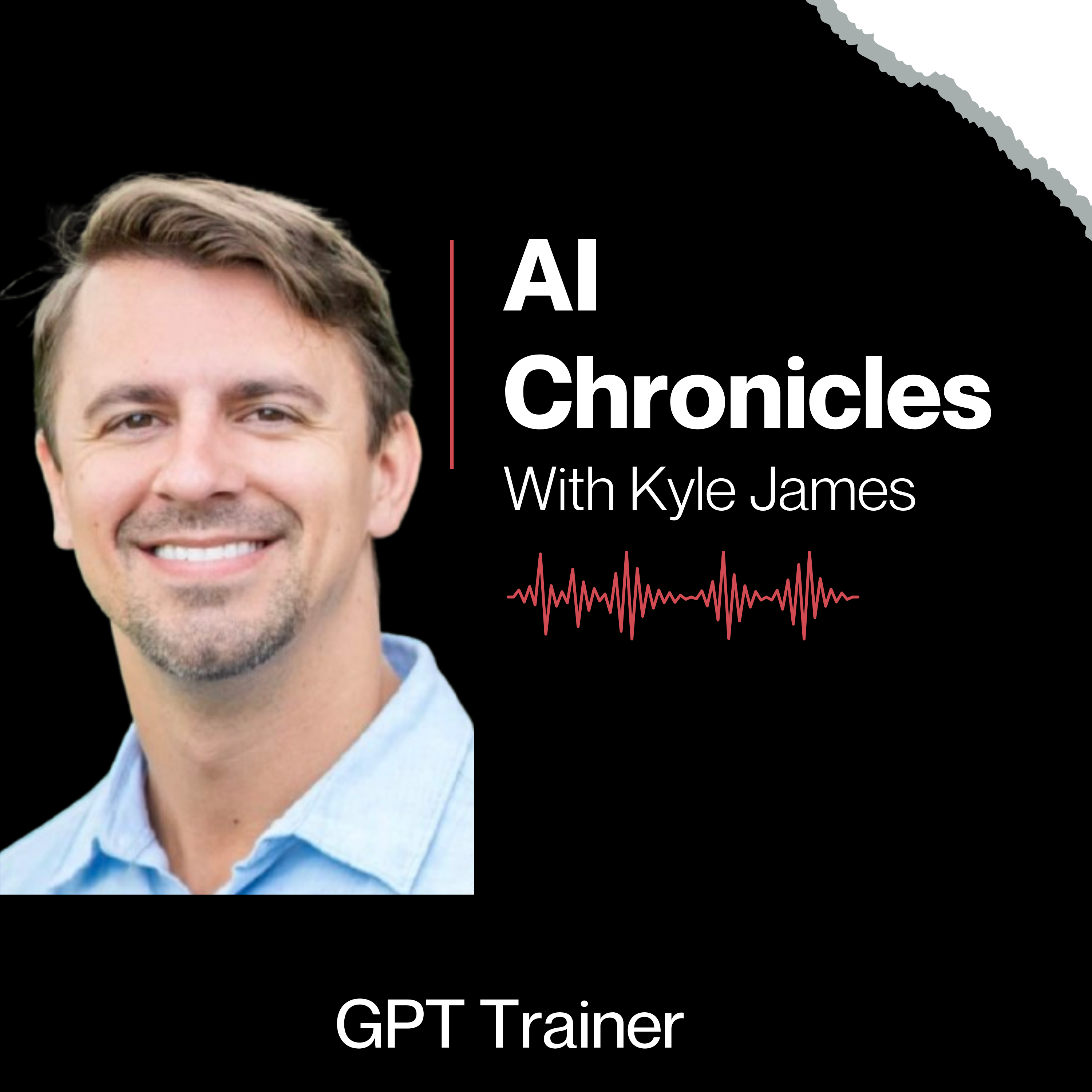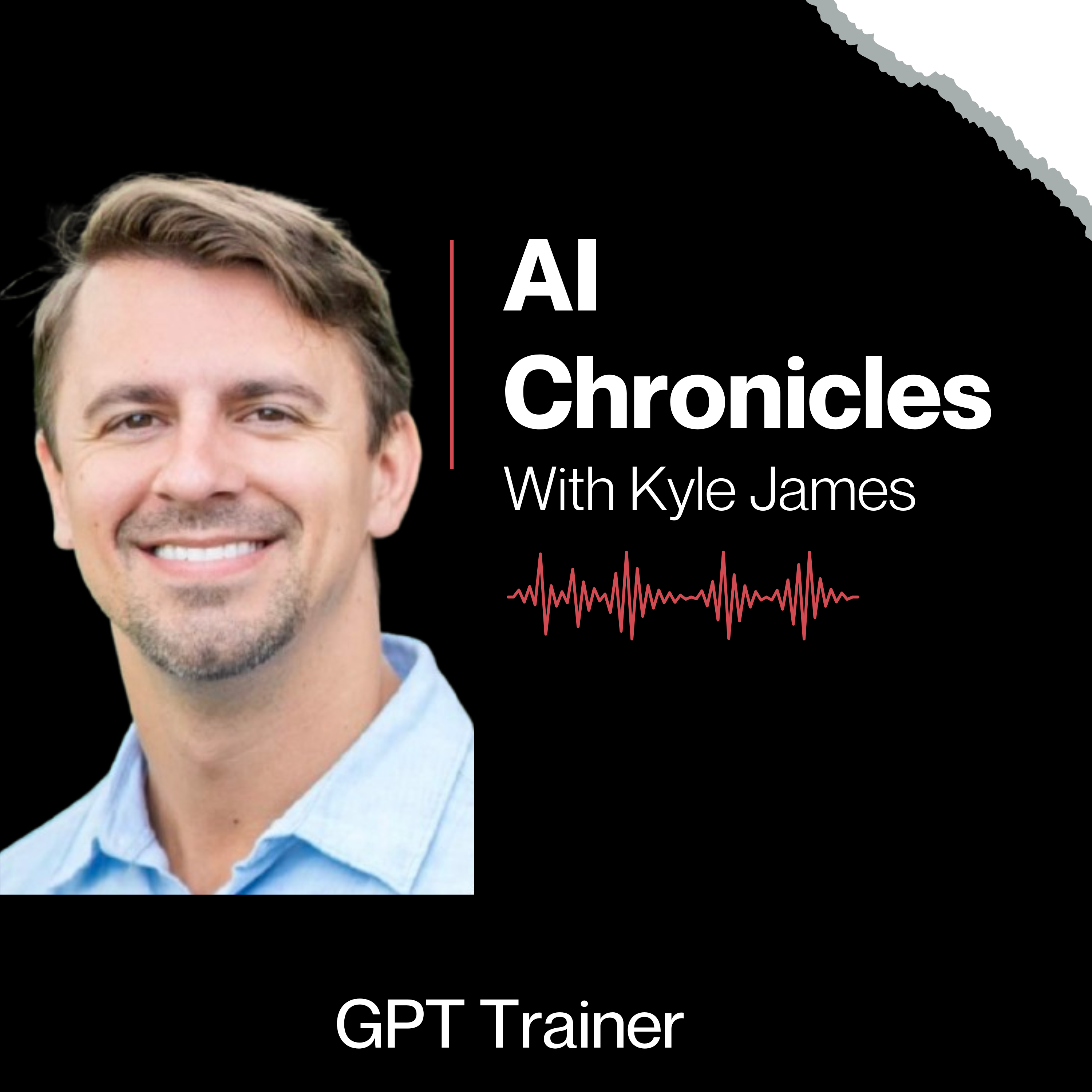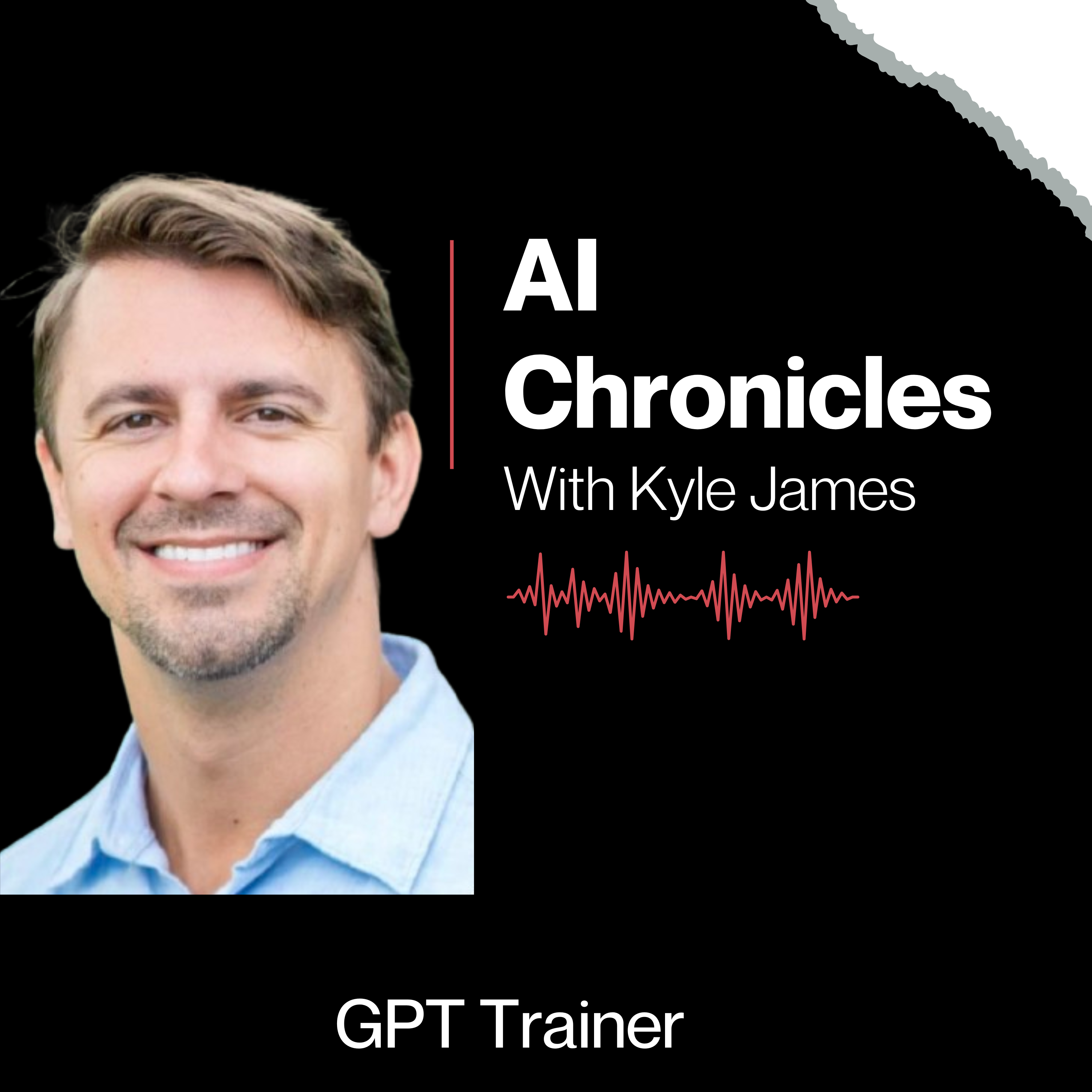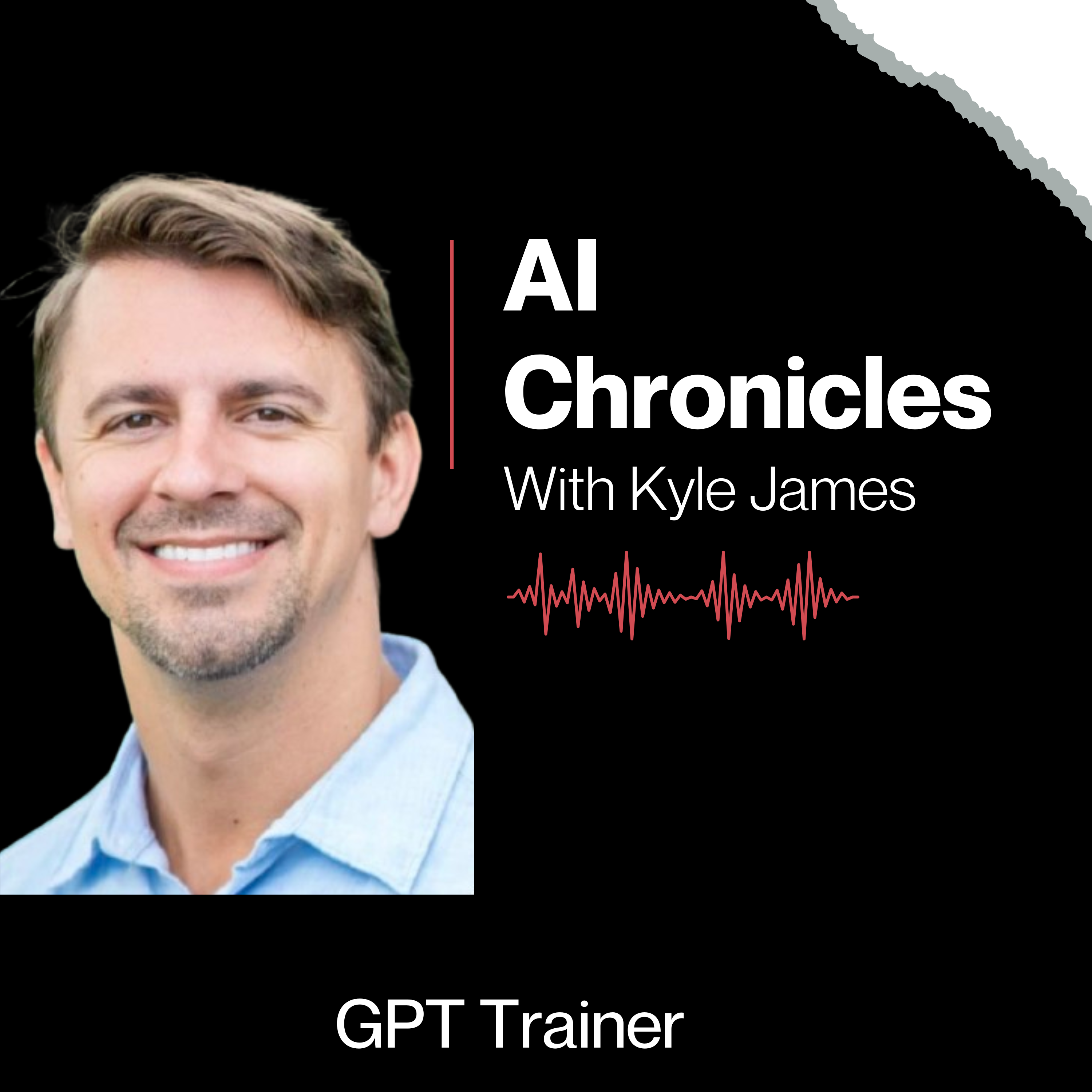Episode Transcript
Speaker 1 (00:00.174)
Welcome to the AI Chronicles podcast. I'm your host, Kyle James. And today we're going to be discussing how a software development company called Quotapath was able to scale its business by helping companies simplify sales compensation and streamline commission tracking through automation and AI driven tools. If you're a software development company or just an AI in general, then you need to listen closely. Have you found that your AI agent is hallucinating or just mishandling basic conversations? Speak to GPT Trainer.
GPT trainer fully manages your AI agent for you, eliminating hallucinations for good while also drastically improving your AI agents response. Go to gpttrainer.com to learn more. So for our guests today on the show, I have AJ Bruno, who is the co-founder and CEO of Quotapath. One of the easiest ways to manage commissions and compensations for sales teams. AJ is no stranger to scaling companies.
His previous company, TrendKite, got acquired for $225 million. And the craziest part is Quotapath currently has over 25,000 users. Hey, AJ, welcome to the show. Glad to have you on.
Thanks for having me. I, some of those stats that were on year eight or, like, I tend to think I was thinking about this over the weekend. tend to think about how small scale we are, but we read it and I'm like, well, we've learned so much over the last eight years and such a huge opportunity, ahead of us to, to really make that.
Number 10x what it is and really leaning on AI as an opportunity. So excited to chat and dive in with you.
Speaker 1 (01:43.49)
Yeah, absolutely. So walk us through kind of like the context and the background. did, how did Quota Path, you know,
Yeah, so I am a second time founder. As you mentioned, my first company, TrendKite, was in PR analytics. So not in revenue tech or go to market tech or sales tech or whatever you want to describe it as today. But actually in a space that was pretty hot and heavy, had companies like HubSpot and Marketo, Exact Target that was bought by Salesforce back in, think, 2012 were scaling.
and I had previously been a seller, was the managing director, which was essentially the VP of sales at a company called meltwater. that was in a part of Martac in communications and media relations in media monitoring. and we learned a lot at that time. I learned a lot that BI and reporting and this idea of how, readers of what were readers of the wall street journal or New York times doing with that information, how are they making buying decisions?
And so in 2012, I started TrendKite based in Austin, Texas. And we grew to about 30 million in revenue before being sold to Scission PR Newswire in 2018. And so at that time, 2012 to 2018, going from zero to 30 million in four years was unheard of. But today, of course, you can do that in four days, apparently. I...
Yeah, I appreciated it. But at the same time, I learned a lot through that experience, mostly in the B2B insights. I was running all of go to market for TrendKite. And one of the challenges we had, Kyle, was that we had a lot of new sellers coming into the organization, ramping really quickly, but different roles and different comp plans. And we were using spreadsheets and it was a massive challenge for us to keep on top of it. So we looked at what else was out there.
Speaker 2 (03:41.326)
bought a fairly enterprise tool that didn't work and didn't scale dynamically like we needed it and didn't give the reps most importantly visibility into how they were earning and the compensation they were earning. So we started down this path in 2018 after TrenKite had sold building Quota Path as a, at the time, a product-led growth honestly product that was focused on rep visibility and reps being able to build out their comp plans inside the app.
Speaker 1 (04:13.038)
Wow. And so you've been, that was kind of the start, would you say, in implementing really kind of AI technology, would you say, or did you do that at all in TrendKite and some of the other companies that you were?
Well, I mean, at the end of the day, like machine learning was the name of the game, but it didn't really, it surfaced in some sort of signals in like scoring. we would score, have an impact score of articles based on machine learning. And so you had terms that were very popular and trendy in the tech 2015, 2016, which is like natural language processing. using NLP to understand the sentiment. Now today that's a totally different ball game. And actually my
co-founder from TrendKite, Matt Allison is building a company called Handraise to implement what we really set out to do the AI pieces of it inside in an AI first platform inside of a TrendKite like portal to understand the brands and the narrative behind the brands better. For us, it was more about article to article and then allowing the customer to do the reporting. So we really put the analytics in the hands of the customer and we're essentially a PR
analytics tool first and foremost versus a media monitoring tool. we had coined the term PR attribution, which allowed our customers like Hershey's or Nike to take an article, like I said, in the New York Times or Wall Street Journal or any other three million other publications, editorial content that we tracked around the world, and then understand what the buying decisions and actually attach it one-to-one in terms of the attribution to PR.
Yeah, that's amazing. so talking, you know, obviously I Chronicles podcast here and implementing AI even like in the, the four previously like using machine learning and natural learning and processing. Um, what were some of the, mean, now that you have 25,000, 26,000 users, what were some of those like maybe challenges as you began scale that up? And then at the same time, like, how did you use some of the tools, maybe AI to balance that out?
Speaker 2 (06:23.19)
I think back to 2023 when the GPT-3 launched in November, believe it was 2023, right? And knowing and talking to my co-founders about that and be like, okay, well, this is huge. There's going to be like first in companies and there's going to be first in organizations that are going to be building to AI. But we had always viewed a quota path or I...
used business model as distribution as the thing. Like anyone can replicate quote unquote Salesforce. You could take a AI first tool, a bolts or cursor and actually rebuild those as a wrapper. But the powerful piece of it is the distribution. so partnerships came to play. So HubSpot Ventures is an investor, Cardaventures as well as a partnership, a pretty big partnership with Rippling. We're launching another partnership.
in the fall with another HRIS. So I always felt strongly if we could build those distribution models, then the data behind it and enriching that application layer, the UI being able to surface those insights through AI was going to be the more powerful thing. And that's how you were actually gonna build a defensive mode around this. We'd always had that thought AI or.
elsewhere, but on a daily basis, and it is absolutely daily, I can name the five use cases where we used AI last week. We're constantly talking about this and my director of revenue operations at the beginning of the year, we sat down and I just said, you know, Brendan, I need you to be AI first. Your title is going to move to director of AI ops and everything you do is going to be in service of how do we create efficiency automation process changes with inside the organization.
And then my chief product officer that started in September, Wendham and I had a great dinner, I think in August, right before he started. And we just sat down scoping out the world and everything we talked about had AI either at the forefront or in the backdrop and was just assumed that this was gonna be done in an AI world.
Speaker 1 (08:32.654)
Yeah, yeah, no, absolutely. It's, think the AI first, mean, I can imagine just going from like one title position to like, Hey, it's going to be AI. You're going to, you're in your title. It's going to be AI, whatever it is that you're doing, AI is going to be the mix of it. And I think that like every single company that's, mean, there's just this race that's happening within the AI space. And if any company, it doesn't matter which industry or not implementing AI, um, even just to work with AI, they might find themselves lagging behind. So.
And walk me through, talking a little bit more about, know, quote a path, Like step by step, what does it look like for someone who's listening in, like, Hey, I'm not part of this company before. What does that user experience look like now that you've kind of integrated AI and how it's capitalized?
Yeah, at the beginning of the year, we launched AI powered plan builder, which completely changed how our customers think and build comp plans. I know to take a step back context here is that a quota path differentiates in how our customers build comp plans. We took the non formula based approach. I think a lot of companies had a trendy approach to this, but we actually even really thought about it differently where we componentized each part of the comp plan. So if you're
and sales out there and you have like a comp plan, you might have a quota that will give you some certain rates, but then you might also have SPFs or other ways that you can make your commission. And those variable components are important. They're like Lego blocks. You need to be able to see them and parse them out. If you have a deal, you sell a two year deal that has three different product lines tied to it. Well, you're not just getting commission off of that main quota.
You also have different pieces to this, the multi-year playing a part as well. And for a rep to, if you really want to incentivize and change the behavior and change the outcome of that, well, then they need to understand what they're playing the game for. And that's where we started. And so with AI powered plan builder, that first experience is actually a prompt. You can either upload a PDF or you can drop in your formulas or you can describe the comp plan.
Speaker 2 (10:46.858)
And it will build the components for you. And so that's the start of it. We'll take that and, in over the next several months, launch the mapping opportunities with it as well so that it integrates very clearly and nicely into that. So I always thought about AI as more of a workflow opportunity from start to finish. Now organizations that are AI first complete that workflow from day one, whereas companies like ours actually have to go back and retro think through those.
a little bit, which can make it a little bit more challenging where if you're directly competing against it, but the secret sauce of quota path with the earnings calculator, that's actually not that easy. And I know this from firsthand to where we use AI tools to build today and know that they can send you down the wrong path. And I'm actually interviewing all of our engineers right now. Actually I have three today, two tomorrow. had four last week of
How are they building, how are they getting more efficient with tools that are out there?
Yeah. for so, it's just kind of a curious spot on question here, but like, it most different people that sign up, is it typically like businesses that are signing up or is it sometimes individuals, smaller companies?
Yeah, I mean, our ideal customer profile today is more in the mid market of organizations that are somewhere between 500 to 3000 employees. So they all have a sales team of anywhere from 50 to 500. Uh, that's like the best fit, but given that we have that product led growth, uh, tie, we have transparent pricing on the website. We have a free trial.
Speaker 2 (12:32.118)
You can go in and experience the app and use the AI with get started quickly on your own and build out comp plans and test them out and model them. And that is a differentiator where I think AI serves us really, really well. So that we obviously then have a sales team. And what we found in one of our learnings was that rev ops and finance are two main types of buyers actually do like a white glove type service, both on the sales process and then on the other side.
of it in more of an opportunity and a managed service because comp can be very, very challenging and everyone's on a special snowflake. So they want to make sure that they're being taken care of.
Yeah. Yeah. No, absolutely. I love how that's like the, you know, like the ICP is like the mid-market enterprise, but at the same time you have that free trial where like companies can see it and try it for themselves and then make that decision if it makes sense to take that next step. And, and talking about that with, with those, your different clients, what types of like results have you seen some of these organizations achieve by utilizing?
Well, if you think about the high level, what we're trying to do, which is align company objectives to the incentives of the sales team to drive better outcomes, then what we start with is at the top level, what are some of those main KPIs and drivers that you're trying to to change? So I'll just use quota path as an example. At the beginning of last year, about 30 % of our new customers were multi year, meaning two year or beyond.
And Ryan Milligan, our VP of sales and ops, he was like, we've got to, we've got to move a major portion of our customer base to multi-year. And so we sat down and designed the comp plan together and just really heavily incentivized that second year. Not quite as much as the first year, but actually quite a bit. And we saw that move from 35 to 85 % within six months.
Speaker 2 (14:38.742)
And so if you take one specific piece of, yeah, huge jump, also if you just take one specific piece of the comp plan, you can change that. So using that as a case study, we could apply that across multiple variable comp teams like CS, SDRs, marketing even, and really, okay, what's your North Star metric? And then work backwards and waterfall that across the organization to really show that. And we've done that multiple, multiple times with different customers.
to really get them. In fact, there's a customer of ours who was using just rolled out comp plans for the very first time. And she wanted to make sure that all of the views for the reps were really crystal clear. We actually took our components and created folder systems and we rolled this out to all of our customers so that they rolled up. So it was just a cleaner view for all of our customers. So we're very focused on the UI and ensuring that
our teams because we have those 25,000 plus users understand what they're viewing when they log into Quotapath and whether it's on mobile or on a desktop version.
Yeah, I think that's so important too, because the clarity behind it, you even coming from like the sales background, like when you get that, you know, either yearly or quarterly commission or even like monthly commission, especially on a yearly, you're like, Hey, I see this number. I had a number in my mind. I'm confused. Why is this different than I thought? And to see that clarity behind it, I think that that can really clear up things for, for sales reps and for marketing and different positions.
which can go a long way for like, would imagine with like retention, you know I mean? Like if there's some sort of like, Hey, I think that come any sort of doubt that the companies, you know, didn't deliver the right amount of money. Like it can hurt the trust. so any sort of clarity that quota path can bring, would imagine.
Speaker 2 (16:34.348)
It helps us right. think the PL going back again to the PLG where we build around the user in this case the sales rep we started bottom up now that ended up being the wrong thesis but what we how what we end up seeing is that a lot of companies have really screwed up comp plans and so when they bring them to us and they're messed up is question of how adaptable to change are they and if they're adaptable to change and they're going to be a great customer if they're not then they might be challenging and we've gone we've had our medicine where
It's actually not quote a path. That's the problem. The organization, whether it's their data and their ops and their hygiene or the structure of their plans themselves are challenging, make really not great customers. And it's difficult when, when someone raises their hand and said, we need help to say, in fact, I would actually argue that typically a customer is going to come to us has screwed up something because that's the reason they're coming to us. So we've worked very heavily on our
sync improvements and how quickly they're syncing as well as letting users know what's actually data is being brought in and data validation and AI is awesome there because then it's like what happened to this deal? Where is this deal? Why am I not seeing it? And you get instant feedback through AI to be able to understand where there's problems or challenges in that source viewer.
Yeah, amazing. And so as we start wrapping up here, where can people who are listening in learn a little bit more about Quota Path and what would you recommend for next steps?
Just sign up for a trial, right? Like that's easy. Just play around with it. I think there's a lot of opportunity for us to continue to build out this trial process to get further into the app for the funnel for our users. We're going to start doing some really interesting things on the, on our website and in bringing our product and website even closer together in the next couple of months. But
Speaker 2 (18:32.99)
I would just say just sign up and check it out, upload a CSV even if you just want to try it. There's obviously product tours and dummy data inside of it that you can play around with, but it helps just give a sense of the world that you're building in. And whether you're a rep, a leader, rev ops, ops leader, finance controller, HR even, there's an opportunity to see if quota five could be a good fit for you.
Yeah, absolutely amazing. Appreciate you, AJ. We're going to wrap it up from here. And thanks for joining us and sharing more insight on Quota Path and how you're really honestly making a huge impact for really just different parts of the business, whether it's HR, sales, rev ops, probably even imagine C-suite executives as well. amazing. Thanks for listening, guys. Again, if you're a software development company and your AI agent is hallucinating, go to gpttrainer.com to learn more on how we've helped.
our clients fine tune their AI agents. Thanks again and hope you have a wonderful rest of the day. Thanks AJ for having you on and looking forward to seeing you on the next episode of the AI Chronicles.
Thanks Kyle.



